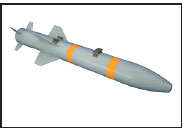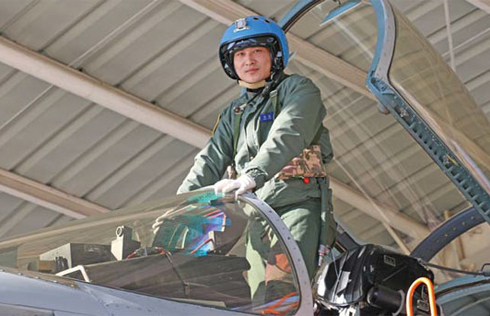Missile targets foreign sales
New, short-range AR-2 is perfect for mounting on drones in anti-terrorism uses, officials said
China can now offer users of its combat drones a new missile designed for anti-terrorism operations and low-intensity conflicts.
The China Academy of Aerospace Aerodynamics, the country's largest military drone exporter by number of products sold overseas, said it recently conducted live-fire tests on the AR-2 short-range air-to-surface missile in northwestern China.
|
The AR-2 is seen as tough competition for US, French and Israeli missiles. |
The missile also can be carried by Chinese attack helicopters and other unmanned aircraft after minor technical modifications, they said.
With a weight of about 20 kilograms and a 5 kg warhead, an AR-2 has a maximum range of 8 kilometers and a top speed of 735 kilometers per hour. It is effective against personnel, armored cars, houses or bunkers, its designers said.
Zeng Like, project manager for the AR-2, said that the academy hopes to win market share from the United States' AGM-114 Hellfire, widely used in the 1990s and 2000s. At least 29 nations, including Australia, France and South Korea, deploy the Hellfire, according to Jane's Weapon Systems.
"There are a lot of counterterrorism operations and low-intensity conflicts in the world that create a huge demand for low-cost, high-efficiency weapons to hit cars or light-duty, armored vehicles," he said. "We believe that most ground targets designated for drones are soft targets or lightly armored vehicles, so using a heavier missile such as the AGM-114 Hellfire for such operations is a waste."
Smaller, cheaper missiles like the AR-2 are powerful enough to handle those targets, and their lighter weight enables a drone to carry more missiles, Zeng said.
The AR-2's biggest competitors are the US' AGM-176 Griffin, currently the best-selling lightweight precision-strike weapon, France's Lightweight Multirole Missile and Israel's Whip Shot missile, he said.
But, Zeng said, "the AR-2 features strong capabilities and a lower price, so we are positive it will have good market prospects".
Many of the academy's clients now use the bigger, heavier AR-1 missile with CH drones, he said.
In another development, the academy said trainees from one of its foreign clients performed a test in which four CH drones were networked to perform as a fleet.
Ground controllers from the unnamed foreign nation who were trained at the academy guided four CH-4B drones via satellite to work together in a patrol.
Huang Wei, a senior researcher who oversaw the test, said the networking of multiple drones is useful for joint operations in combat. Huang said only China and the US are capable of conducting joint operations using multiple drones.
- Public security bureau backs app for citizens to report suspicious behavior
- Five stories to inspire love on Valentine’s Day
- Eleven miners trapped in Central China coal mine blast
- Eight dead in Central China coal mine blast
- China orders medical security campaign following malpractice-caused HIV infections



















